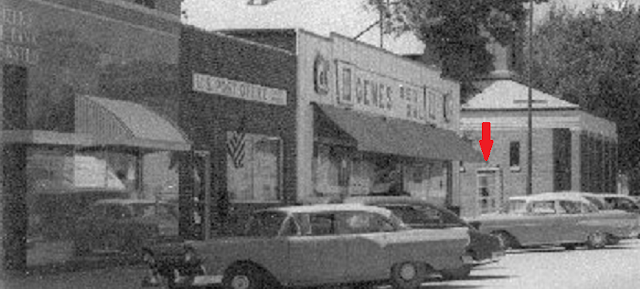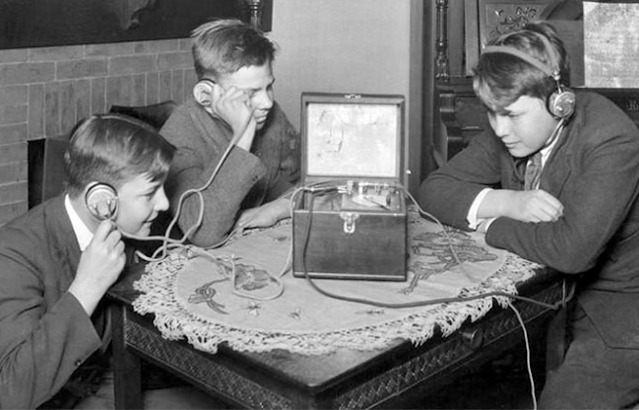© Mark Ollig
In 1973, 30-year-old Vinton Cerf was working in a lab at Stanford University when 35-year-old Robert Kahn, employed by the US government's Defense Advanced Research Projects Agency (DARPA), came by to visit.
Kahn discussed DARPA's problem making all the computers on separate packet-switched networks act as if they were part of one shared network.
Five years earlier, both had seen and been impressed with a futuristic demonstration of a computing system presented by Douglas C. Englebart, who was 43 in 1968.
Engelbart revealed his concept of a future computer network using the NLS (oN-Line System).
In 1957, Engelbart worked at Stanford Research Institute in Menlo Park, CA.
There, he developed a functional prototype of a futuristic computing system.
In 1968, Douglas Engelbart gave a remarkable computing presentation on “human-computer networking” during the Fall Computer Conference in San Francisco, CA.
Engelbart's computer demonstration came to be known as “The Mother of All Demos.”
“A Research Center for Augmenting Human Intellect” was the title of Engelbart's presentation.
A fully interactive NLS computer multiconsole display system was linked via telephone lines to a host computer located 30 miles away inside the Stanford Research Institute.
Engelbart wore a headset with a microphone and was seated at a desk in the middle of the stage.
On the desk sat a computer terminal console display or CRT (cathode ray tube) connected to a large video screen above the stage facing an audience of approximately 1,000.
Many computing specialists in attendance curiously watched Engelbart as he typed various commands on a keyboard, while explaining each demonstration application to be used over a multi-computing network.
One surprise of the 1968 demo was the handheld “pointing device” Engelbart regularly used to move the cursor dot on the CRT monitor. It looked like the hand mouse we commonly use to maneuver around the internet and computer programs.
Engelbart developed a working computing mouse in 1963.
When asked, “Why was it called a mouse?” Engelbart explained how someone suggested this name in 1963 because the cord connected to it looked like a tail, and the wooden handheld device was small, so they affectionately called it a mouse.
Douglas C. Engelbart obtained US Patent 3,541,541 for the “mouse,” Nov. 17, 1970, officially titled “X-Y Position Indicator for a Display System.”
During this same time, Cerf and Kahn continued their research to develop the networking protocol layers that allow today's internet to operate as it does.
In 1974, Cerf and Kahn published “A Protocol for Packet Network Interconnection,” which describes the details of Transmission Control Protocol (TCP).
By 1976, Cerf and Kahn completed the final TCP/IP code using Internet Protocol version 4 (IPv4).
IPv4 is a four decimal, 32-bit binary code and provides a maximum of 4.3 billion unique IP numerical assignments or addresses for identifying individual computing devices – think telephone numbers.
Four decimal points separate each of the eight binary bits, which make up the 32 bits of the IPv4 code.
For example, a dotted, decimal format Internet Protocol (IP) address of 216.27.61.137 when written in binary code is this:11011000.00011011.00111101.10001001.
One needs to remember, it was 1976; given the small number of connection points linked across the existing network, Cerf and Kahn thought 4.3 billion IP addresses would be plenty to last.
Of course, they never envisioned billions of internet domains and the millions of future websites requiring IP addresses that would quickly exhaust the supply of IPv4 addresses.
In 1982, Vinton Cerf and Robert Kahn's Transmission Control Protocol/Internet Protocol (TCP/IP) was used as the official protocol suite over the Advanced Research Projects Agency Network (ARPA).
After 29 years, by 2011, the IPv4 network layer protocol addressing scheme had (for the most part) run out of new, assignable IP addresses.
Luckily, there is an internet standards body known as the Internet Engineering Task Force developed IPv6, which is currently being implemented across the internet to replace IPv4.
There are 128 bits of address space using IPv6.
IPv6 provides some 340 trillion, trillion, trillion uniquely assignable IP addresses.
Of course, this capacity will provide a nearly limitless pool of unique IP addresses.
Today, millions of domain names and many networks use IPv6 connectivity.
To check whether your domain supports IPv6 connectivity, use this testing tool at http://ipv6-test.com.
Douglas Engelbart's Dec. 9, 1968 demonstration video is preserved on the Internet Archive website at https://bit.ly/3ofmzD1.
The contributions to the internet and computing by Cerf, Kahn, and Engelbart will forever be engraved in the history of computing technology.
 |
| Douglas C. Englebart in later years holding the original computing mouse. |
 |
| Vinton Cerf and Robert Kahn in later years. |





